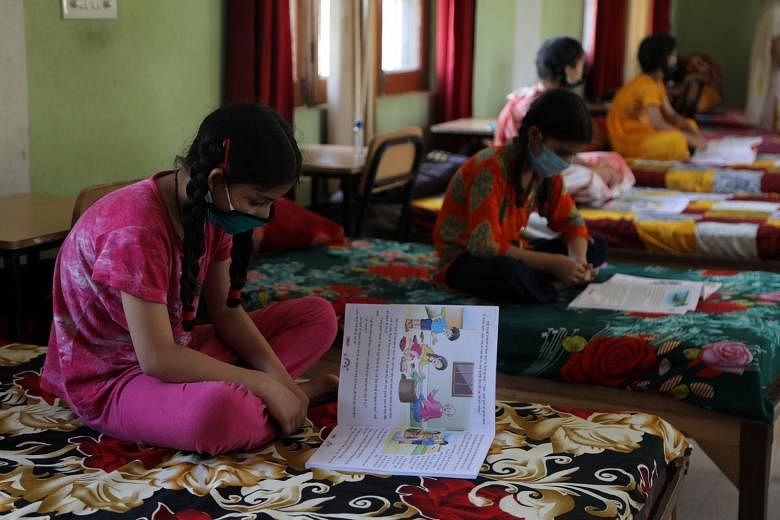The Indian government will launch 12 new television channels for every grade in school to help poorer students without access to smartphones or laptops cover the school curriculum amid disruptions caused by the coronavirus.
India's stringent lockdown is slowly being eased. But schools and higher education institutes have been shut since mid-March, with no word on when they will reopen.
The National Council Of Educational Research And Training, which advises the government on education, is preparing the content. Its director, Dr Hrushikesh Senapaty, told The Straits Times lessons will be in English and Hindi and run on a 24-hour loop.
"We have taken into account that some students have Internet connectivity through smartphones and laptops. Some don't even have smartphones and their parents have simple mobiles," said Dr Senapaty. "Students can watch television and teachers can guide them by telephone and SMS."
He said classes were being recorded through Zoom and the launch date would be finalised by the government.
India has more than 260 million school students, 60 per cent of whom are in government schools that provide free education. But quality has often been questioned.
The Annual Status of Education Report 2018 found that one in two students from Grade 8, aged 13 to 14, could not do basic division.
There is growing concern that the coronavirus pandemic will further widen the divide between well-off and poorer students, and even increase dropout rates.
Amid this new challenge, states and schools, both government and private, are using multiple platforms like WhatsApp, Zoom, text, radio and TV to reach students.
Some states are already running education programmes on the government-owned Doordarshan television channel. The federal government, too, is running educational channels for senior classes.
Experts said that disruptions to education are real in India, where the education system still has a lot of room for improvement.
Ms Protiva Kundu, who is a coordinator at the Centre for Budget and Governance Accountability, said radio and television "have huge potential to contribute".
She added: "There is no alternative to face-to-face learning. Rural and urban poor children are already deprived of many facilities. With the existing digital divide, if governments don't push for active use of mass media, learning inequality will widen further."
But even TV may not reach the very poor.
Mr Ranjit Ram Prajapati's three children, aged 12, 10 and four, have been unable to access education on any platform.
The daily wage labourer who lives in Delhi does not have a smartphone or a television.
"For two days, the school teacher called, saying lessons are being sent through WhatsApp. I have a very old phone and I don't know how to use WhatsApp. After that, I didn't hear back from the school," he said.
"I feel worried about how (his children) will study."
Some state governments are also creating content for radio.
In the state of Bihar, among India's poorest, the government is working on a radio programme for junior classes till Grade 6. It has also started television classes on Doordarshan Bihar for higher classes.
The state government has also uploaded all school texts on a government website.
"We are in touch with teachers and asking them to apprise our students through phone on the syllabus in whatever way possible," said Mr Sanjay Kumar Singh, project director at the Bihar Education Project Council.
But he said the government's focus remained on saving lives.
"If lives are saved, some delayed learning won't matter much. We have to stay home for another two to three months."











